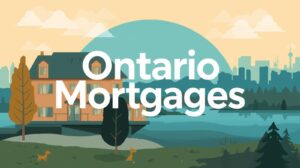When it comes to mortgages, understanding the factors that influence interest rates is crucial. Since the financial crisis in the United States back in 2008, interest rates in Canada had remained historically low… until 2020 of course. When the Covid-19 pandemic hit, rates were reduced to record lows to stimulate the economy and encourage economic growth (free money as many referred to it). The plan worked, but quantitative easing was practiced for far too long giving Canadians the opportunity to overleverage to their necks! Now, in the post-pandemic world as we know it, inflation has caused the prices of housing, food, goods, and services to become unaffordable, while incomes have failed to keep up.
It is important to stay informed about the current state of interest rates and how they may impact borrowers. In this updated blog, we will delve into the current landscape of mortgage interest rates in Canada in 2023, and provide relevant insights for borrowers.
The Role of the Bank of Canada:
The Bank of Canada (BOC) plays a vital role in ensuring the stability and growth of the Canadian economy. As the central bank, it sets and controls the key interest rate, which directly affects borrowing rates in the country (mortgages, corporation debt, government debt, etc.). Banks, in turn, base their prime lending rate on the Bank of Canada’s key interest rates. While changes in the key interest rate do influence mortgage rates, the adjustments made by major banks are likely to mirror the exact magnitude of any change made by the BOC.
The Prolonged Low-Interest Rate Environment:
The past decade and a half has seen a prolonged period of historically low-interest rates in Canada. This was primarily done to promote economic growth and maintain stability. However, it’s important to recognize that history will always repeat itself, and as a nation, we should have predicted what is currently happening across the country and the globe (although the exact timing remains a challenge in predictions). A continuous concern in Canada is the high levels of debt Canadians have accumulated due to the prolonged accessibility of low-interest rates (too low for too long!). Many individuals were borrowing to their maximum affordability, which, now in hindsight, posed a huge challenge when rates began to rise. All that borrowing led to spending – money that was pumped into the economy, increasing demand and competition, which directly drove the cost of goods and services. As a result, this excess money and spending have caused the inflationary problem that governments across the world are now fighting to tame. This becomes more evident with each increase and with each month that passes.
The Bank of Canada’s Balancing Act:
The Bank of Canada faces the delicate task of navigating interest rate adjustments to avoid shocking the economy or causing widespread default among borrowers. They must carefully consider the impact of higher rates on heavily indebted Canadians. Striking the right balance between economic stability and responsible lending is crucial, which is why these rate hikes happen slowly, rather than all at once. Between each interest rate hike, they must step back and give sufficient time to analyze the data, consisting of CPI, GDP, Housing, and Unemployment, among many other data points.
Borrowing Responsibly:
As individuals, we also bear the responsibility of making informed borrowing decisions. While interest rates were at all-time lows in 2020 and 2021, it was essential to assess our own repayment capabilities should the inevitable happen (the inevitable being rate increases). This evaluation should always consider personal circumstances such as income, lifestyle, and financial responsibilities. Borrowing to the maximum allowable limit should be approached with caution, as it leaves little room for adjustment when rates increase. It is crucial to consider potential future changes in income and financial stability when deciding on borrowing amounts.
Conclusion:
Understanding current mortgage interest rates in 2023-2024 is crucial for borrowers in Canada. While the low-interest rate environment is now over, it is important to be mindful that the potential for further rate hikes is not far from possible. Both the Bank of Canada and borrowers must exercise caution and responsibility to maintain economic stability and individual financial well-being. If you have any questions or would like to discuss current interest rates for your mortgage, please feel free to contact us today at (905) 455-5005.


